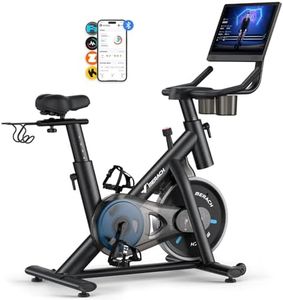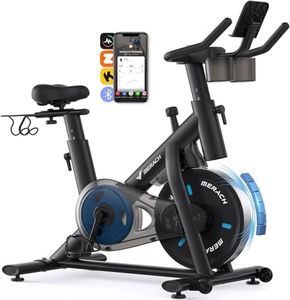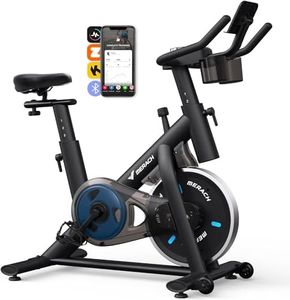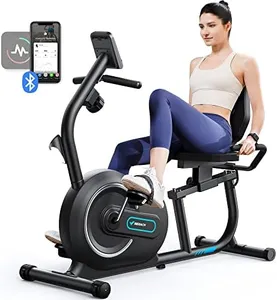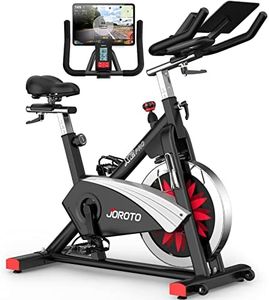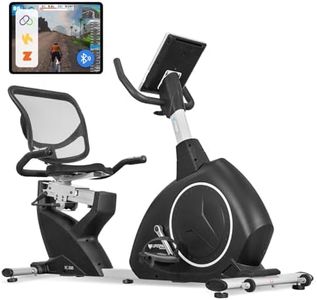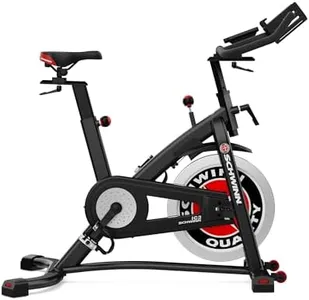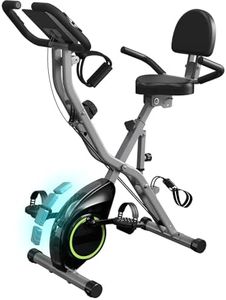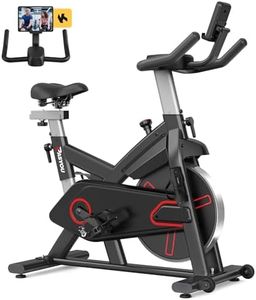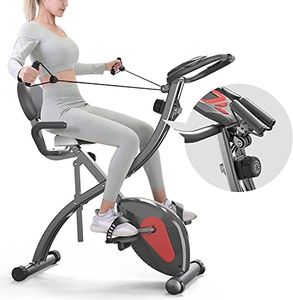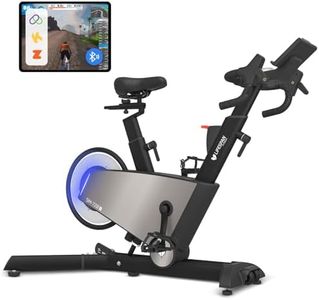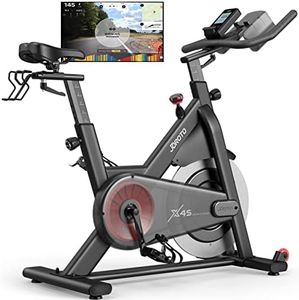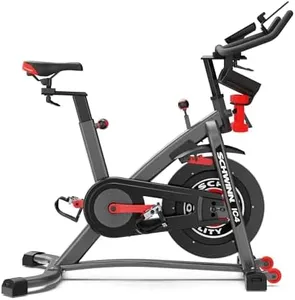We Use CookiesWe use cookies to enhance the security, performance,
functionality and for analytical and promotional activities. By continuing to browse this site you
are agreeing to our privacy policy
10 Best Indoor Cycling Bikes
From leading brands and best sellers available on the web.Buying Guide for the Best Indoor Cycling Bikes
When choosing an indoor cycling bike, it's important to match the bike's features to your fitness goals, the type of workouts you plan to do, and the comfort level you expect. Consider how much space you have available, how often you’ll use the bike, and whether you prefer structured classes or casual workouts. Focusing on the right key specifications will help ensure you get a bike that keeps you motivated and supports your exercise routine.Flywheel WeightThe flywheel is the part of the bike that spins as you pedal, and its weight affects the smoothness and resistance feel of your ride. Heavier flywheels generally offer a smoother, more consistent pedaling motion that simulates riding a real bicycle, especially at higher resistance levels. Lighter flywheels can be easier to start and stop, making them suitable for beginners or those who don’t want an intense workout. If you’re aiming for a realistic and challenging experience, a heavier flywheel (usually 15kg or more) might suit you best, while lighter options (under 10kg) can be good for light exercise or rehabilitation.
Resistance TypeResistance is what makes your ride tougher or easier, simulating hills or flat roads. There are mainly two types – friction resistance (using brake pads) and magnetic resistance (using magnets). Magnetic resistance is quieter and requires less maintenance, while friction resistance can offer unlimited levels and might feel more 'traditional.' For everyday home use, magnetic resistance is preferred for its smoothness and low noise, while friction is fine if you don’t mind some sound and occasional upkeep.
AdjustabilityThis covers how well the seat and handlebars can be moved to fit your body. Proper adjustability ensures comfort and prevents injuries. Bikes with both vertical and horizontal adjustments for the seat and handlebars can better accommodate different body sizes and riding positions. If more than one person will use the bike or if you’re particular about finding the perfect fit, look for models with as many adjustment options as possible.
Console and ConnectivityMany indoor cycling bikes come with a console that displays your workout stats like time, speed, distance, and sometimes heart rate. Some bikes also offer Bluetooth or Wi-Fi connectivity, allowing you to sync with fitness apps or participate in live-streamed classes. If you enjoy tracking your progress or need guided workouts, choose a bike with a console and relevant connectivity. If you prefer to just hop on and pedal without the tech, a basic bike will be sufficient.
Frame Sturdiness and Weight CapacityThe sturdiness of the bike’s frame determines how stable it feels during intense workouts and how much weight it can safely support. Heavier, well-built frames with higher weight limits are better for users who want to stand up when pedaling or plan on vigorous routines. If you expect to do high-intensity workouts or multiple people will use the bike, look for high weight capacity and a solid frame to ensure safety and durability.
Drive System (Belt vs. Chain)The drive system connects your pedals to the flywheel and is typically either a chain or a belt. Belt drives are quieter, need less maintenance, and run more smoothly, which is preferable for most home settings. Chain drives feel more like a traditional outdoor bike but may require more upkeep and are often noisier. For a quiet, hassle-free experience, go with a belt drive. If you prefer a classic cycling feel and don’t mind a bit more noise, a chain drive may suit you.
